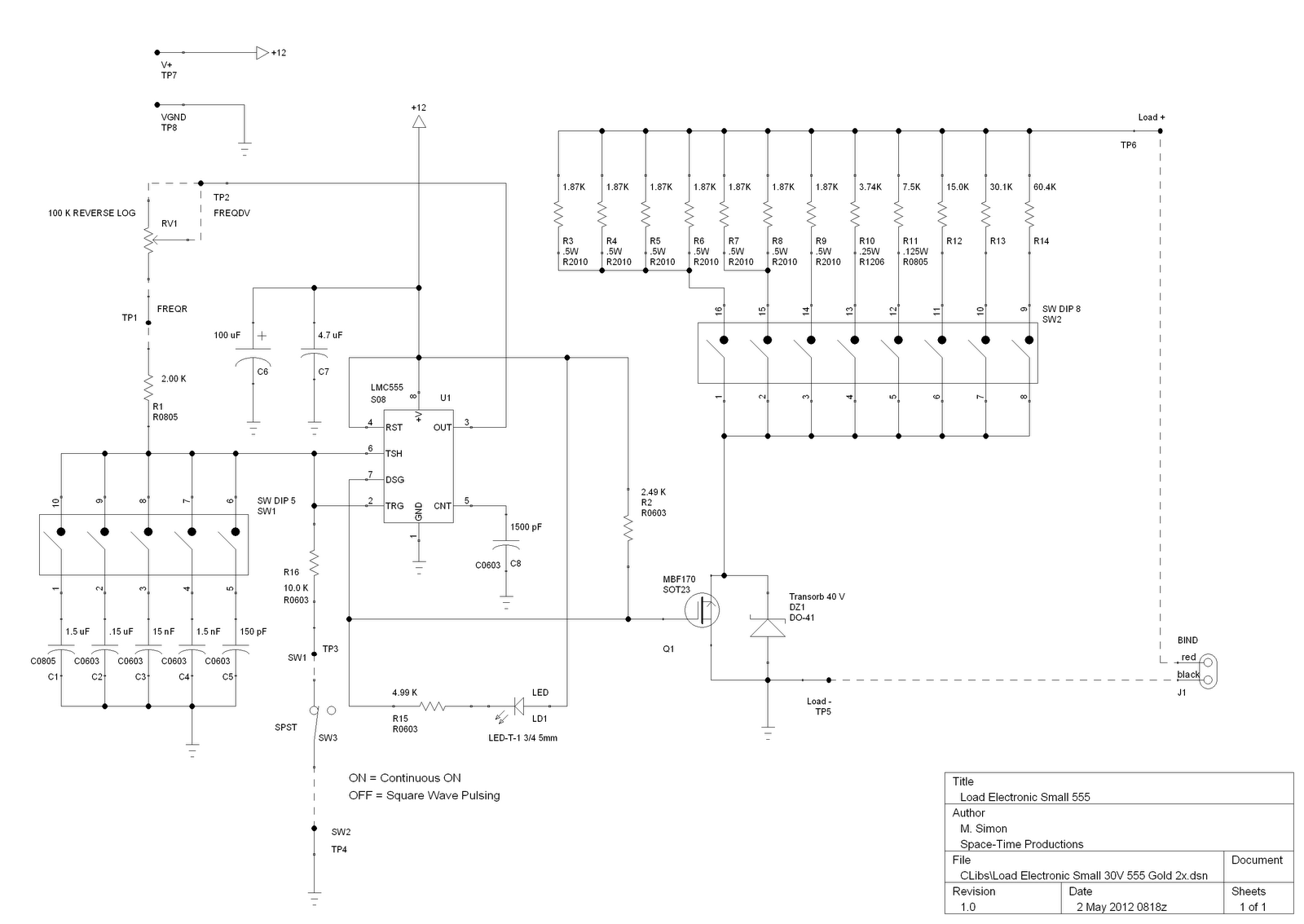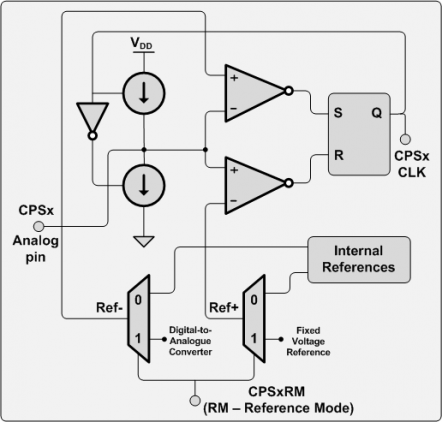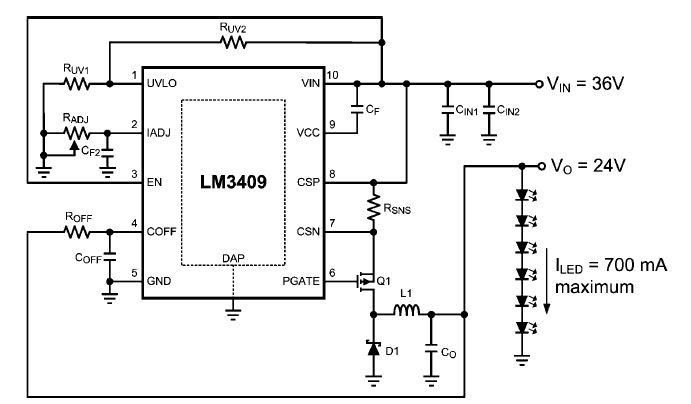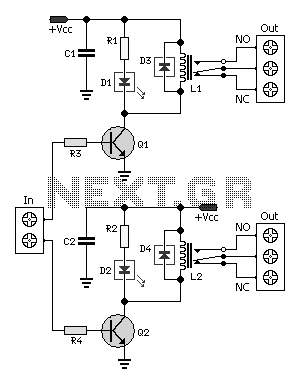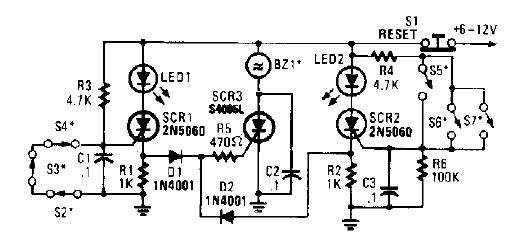
Capacitive load driver
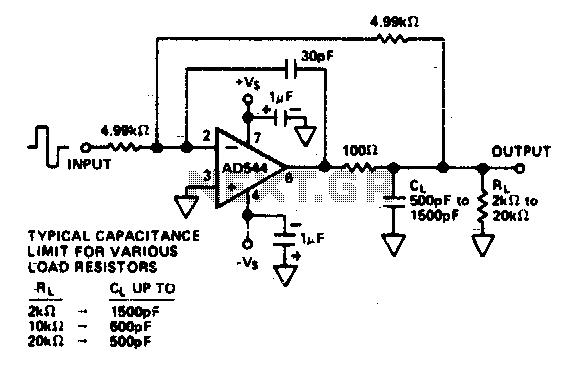
The circuit utilizes a 100-ohm isolation resistor that allows the amplifier to drive capacitive loads greater than 500 pF. This resistor effectively isolates high-frequency feedback from the load, contributing to circuit stability. Low-frequency feedback is returned to the amplifier's summing junction through a low-pass filter created by the 100-ohm series resistor and the load capacitance.
The circuit design incorporates a 100-ohm isolation resistor strategically placed between the amplifier output and the load. This resistor serves a dual purpose: it isolates the high-frequency feedback that can adversely affect the amplifier's performance and enhances the circuit's overall stability. By mitigating the influence of high-frequency signals, the isolation resistor allows the amplifier to maintain optimal performance while driving capacitive loads that can exceed 500 pF.
In addition to its role in high-frequency isolation, the 100-ohm resistor also participates in the feedback loop of the circuit. Low-frequency feedback is channeled back to the amplifier’s summing junction through a low-pass filter configuration, which is formed by the combination of the series resistor and the load capacitance. This configuration effectively filters out high-frequency components, ensuring that only the desired low-frequency signals influence the amplifier's operation.
The interaction between the resistor and the load capacitance is critical for establishing a stable operating point. The low-pass filter created by this arrangement allows the amplifier to respond appropriately to low-frequency signals while preventing instability caused by high-frequency oscillations. Overall, this circuit design exemplifies a well-engineered approach to managing capacitive loads in amplifier applications, ensuring reliable performance across a range of operating conditions.The circuit employs a 100 ohm isolation resistor which enables the amplifier to drive capacitive loads exceeding 500 pF; the resistor effectively isolates the high frequency feedback from the load and stabilizes the circuit Low frequency feedback is returned to the amplifier summing junction via the low pass filter formed by the 100 ohm series resistor and the load capacitance. Cl. 🔗 External reference
The circuit design incorporates a 100-ohm isolation resistor strategically placed between the amplifier output and the load. This resistor serves a dual purpose: it isolates the high-frequency feedback that can adversely affect the amplifier's performance and enhances the circuit's overall stability. By mitigating the influence of high-frequency signals, the isolation resistor allows the amplifier to maintain optimal performance while driving capacitive loads that can exceed 500 pF.
In addition to its role in high-frequency isolation, the 100-ohm resistor also participates in the feedback loop of the circuit. Low-frequency feedback is channeled back to the amplifier’s summing junction through a low-pass filter configuration, which is formed by the combination of the series resistor and the load capacitance. This configuration effectively filters out high-frequency components, ensuring that only the desired low-frequency signals influence the amplifier's operation.
The interaction between the resistor and the load capacitance is critical for establishing a stable operating point. The low-pass filter created by this arrangement allows the amplifier to respond appropriately to low-frequency signals while preventing instability caused by high-frequency oscillations. Overall, this circuit design exemplifies a well-engineered approach to managing capacitive loads in amplifier applications, ensuring reliable performance across a range of operating conditions.The circuit employs a 100 ohm isolation resistor which enables the amplifier to drive capacitive loads exceeding 500 pF; the resistor effectively isolates the high frequency feedback from the load and stabilizes the circuit Low frequency feedback is returned to the amplifier summing junction via the low pass filter formed by the 100 ohm series resistor and the load capacitance. Cl. 🔗 External reference
Warning: include(partials/cookie-banner.php): Failed to open stream: Permission denied in /var/www/html/nextgr/view-circuit.php on line 713
Warning: include(): Failed opening 'partials/cookie-banner.php' for inclusion (include_path='.:/usr/share/php') in /var/www/html/nextgr/view-circuit.php on line 713

